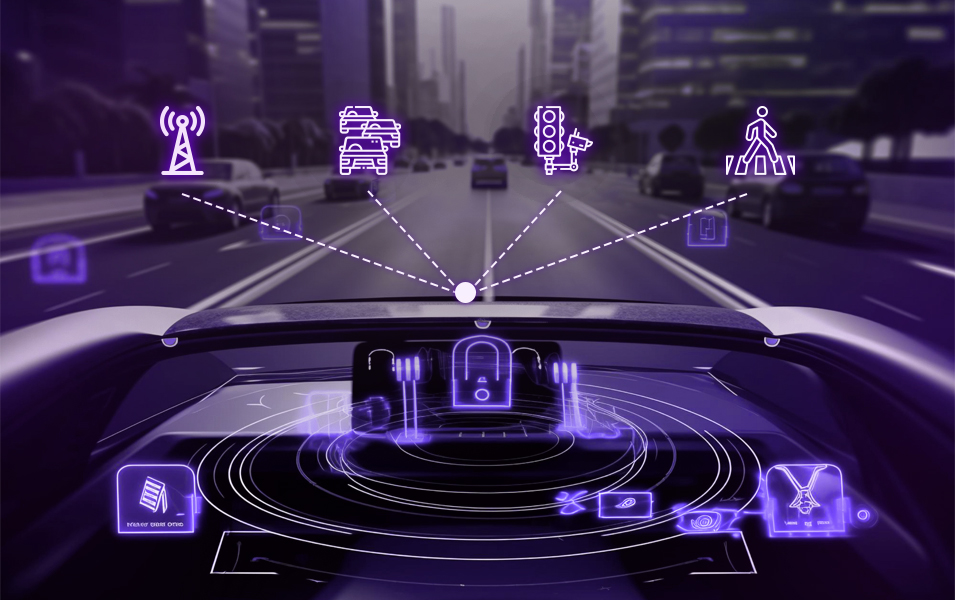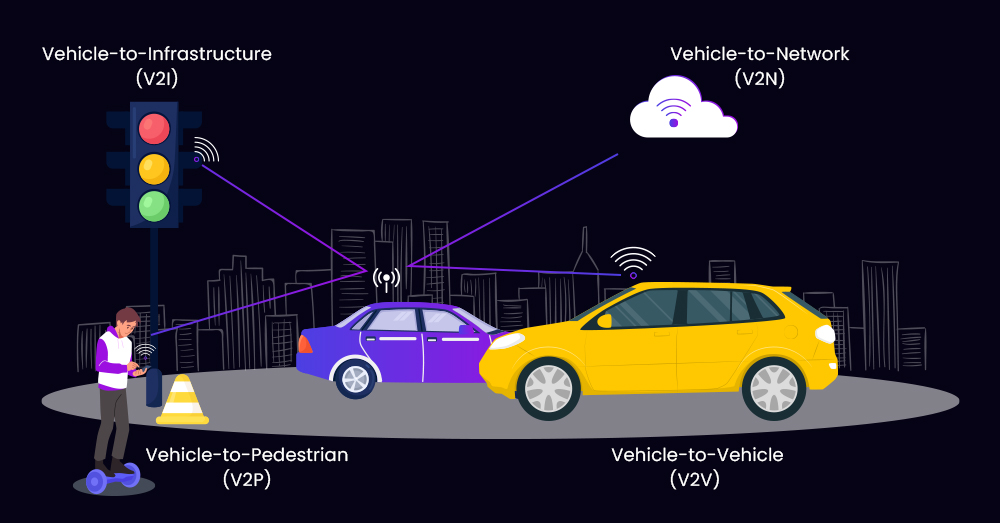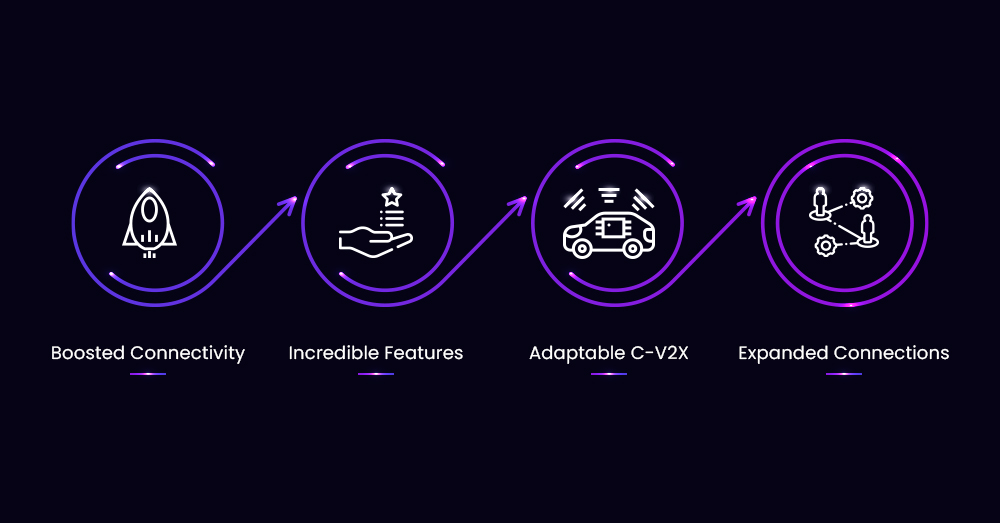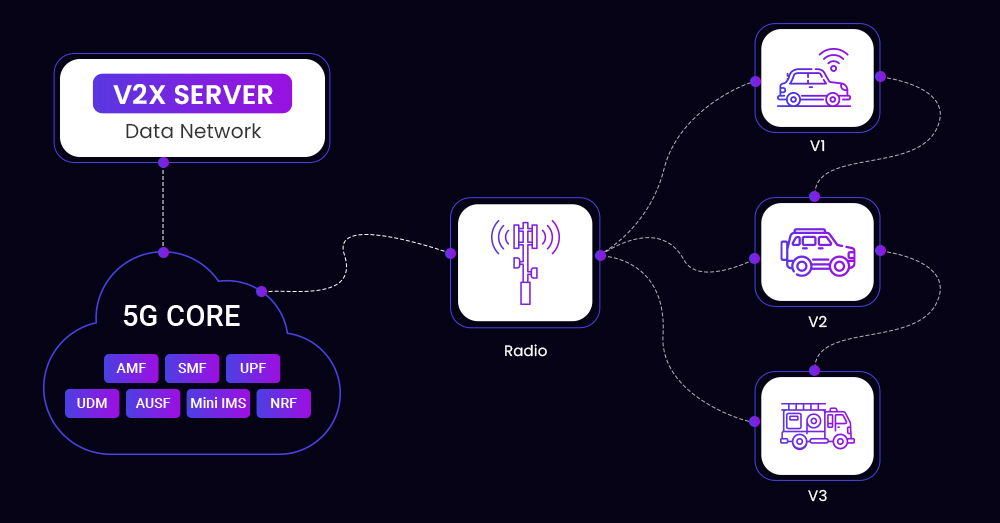How 5G is Transforming V2X Communication in Vehicles?
5G in Automotive: Transforming V2X Communication for Tomorrow's Vehicles


5G in Automotive: Transforming V2X Communication for Tomorrow's Vehicles

As the automotive industry speeds toward a future filled with Autonomous, Connected, Electric, and Shared Vehicles (known as ACES), (Vehicle-to-Everything) V2X communication is becoming increasingly important. This shift is adding new aspects to vehicle safety, security, navigation, and traffic improvement, opening the door to exciting possibilities. From vehicles connecting to the grid (V2G) to make self-driving cars even better at getting around, V2X technology is changing the way we think about modern transportation.
According to Businesswire, the year 2023 is poised to witness the sale of over 76 million connected cars on a global scale. These cars will be equipped with Vehicle-to-Everything (V2X) technology while enabling communication with infrastructure, the cloud, and other vehicles. The combination of high-speed communication, continuous network connectivity, and rapid responses is paving the path for intelligent automobiles. The synergy between the V2X ecosystem and 5G has the potential to enhance the driving experience and open up new opportunities for automotive companies.
Let’s explore how this can be achieved.

Today’s vehicles are much more than cars—they’re smart, connected entities. They talk to navigation systems, traffic signals, and other vehicles using fancy sensors like cameras, radars, and ultrasonics. All of this is made possible by various communication technologies like Wi-Fi, GPS, and cellular connections that create an intricate web allowing vehicles to communicate with their surroundings.
This transformation in V2X communication isn’t just about making cars smarter; it’s about giving businesses new opportunities. As cars become better at ‘talking’ to the world around them, companies can use this to make their operations more efficient, safer, and create innovative business avenues.
In this evolving landscape, the need for 5G in modern V2X communication is crucial. 5G technology can make these conversations between vehicles and their environment even faster and more reliable, which is essential for businesses looking to take advantage of this changing mobility landscape. Understanding and adapting to this evolution can help businesses not just stay ahead but thrive in the new era of smart mobility.
In the world of V2X communication, 5G is a game-changer which opens new & exciting possibilities for how vehicles interact with each other. Picture this: in the near future, thanks to 5G, two cars approaching from different directions can ‘talk’ to decide which one gives way to the other exactly where their paths cross.

Let’s uncover the impact of 5G on V2X communication:
Understanding how 5G influences V2X communication is key for businesses wanting to stay ahead in the world of connected mobility. It’s not just about speed; it’s about embracing smarter, safer, and more efficient ways of operating within the automotive industry.

The 5G network is emerging as the foundational technology for crafting autonomous vehicles. These vehicles generate a huge amount of data – up to 5TB per hour for each connected and self-driving car. This data comes from various sensors like cameras, radars, lidars, and ultrasonics. To put it in perspective, it takes around 3,000 people using devices to produce the same amount of data as a single driverless vehicle at the same time.
Self-driving vehicles need fast data transmission compared to regular cars. Quick response times are vital for making rapid decisions in real-time traffic situations. For instance, accurately locating a pedestrian or predicting the next traffic light relies on this technology. With 5G’s speed, automated control systems can instantly react in emergencies, where quick decisions are essential.
Using 5G, connected vehicles can process data in the cloud, letting cloud-based AI make immediate decisions. By using info from smart cars, machine learning can create accurate models of the vehicle’s surroundings, prompting adjustments like slowing down or changing lanes.
Moreover, the powerful combination of 5G and edge computing speeds up data processing. Edge computing processes data automatically in servers nearer to devices and users. This collaboration speeds up communication with the edge, enabling vehicle infrastructure to handle large data volumes without overloading the network. It also reduces network traffic and costs.
Cellular vehicle-to-everything (C-V2X) brings loads of benefits to everyone involved: car makers, drivers, pedestrians, traffic managers, and 5G providers. 5G makes sure V2X services work from start to finish, giving a good return on investment. It’s pushing the car industry to new heights, making wireless connections better and bringing in new cool ideas. With its knack to handle many connections in a small area and quickly figure out exact positions, 5G-powered V2X connections mean super-fast responses and reliable info. This helps with:
Overall, 5G is changing how cars work, getting us closer to a future where cars can drive themselves.


Technical Content Writer
With a focus on clarity, conciseness & accessibility, my passion for writing enables me to write thought leadership content around cutting-edge technologies like 5G, Networking, Enterprise solution, and emerging technologies. My skills in branding & marketing allow me to produce impactful results while staying up with the latest trends & technology.